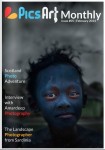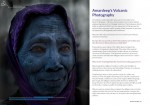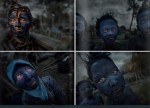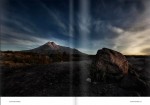My interview has featured in February 2014 issue of PicsArt Monthly magazine. Click images below to view the pages as featured in the magazine. For ease of reading, I have also provided the text in typed format.
Amardeep is a photographer who was born in India but is based in Singapore. His education background, is mixed with an engineering degree from Manipal Institute of Technology, in South India, as well as a MBA from the University of Chicago, and he works in the corporate world. In spite of this, however, he pursues his passion for photography with a full heart.
We asked him about the photos he took at the Mount Merapi volcano in Indonesia.
1. To start off, can you tell us where these photos were taken and why the faces in these pictures are dark blue?
These photos were taken at the Hindu Boko temple in the outskirts of Yogyakarta (Indonesia). The ruins of the ancient temple stands close to Mount Merapi volcano, at a distance of around 25 kilometers. The blueness on the face is because of the volcanic ash the villagers have smeared for a dance performance.
2. What is the meaning behind the event that is taking place here?
When opposites collide, it results in conflict and hostility. In their embrace, there is love and friendship. The law of creation is nothing else but a dance of celebration!
Mankind and nature can be seen in a state of conflict and embrace. Time and again, the energy from volcanic eruptions of Mount Merapi continues to destroy the region. When the going gets tough, the villagers abandon their homes for shelters far away. However it is the eruption that also provides fertility as well as minerals, creating a wealth of earning opportunities.
When eruptions subside, like a magnet, the villagers return to the region and make the most of the new environment. Living at the edge, they embrace the volcano, for its destructive and generative powers.
3. This is a live volcano, is this a dangerous place to live for these villagers?
Mount Merapi is the most active volcano in Indonesia, with history of regular eruption since 1548. It erupts every 3-4 years, with last devastation caused on 25 October 2010. The volcanic ash and stones destroyed many villages falling within a radius of 25 kilometers.
It is unpredictably very dangerous but that doesn’t deter the thousands of villagers from continuing to live in its periphery. They embrace living with the risk of destruction in exchange for land fertility opportunities created by eruptions.
Merapi is translated as ‘Mountain of Fire’, Etymology of Merapi comes from Meru-Api. In Indian Hinduism, Meru refers to a mythical spiritual mountain that remains elusive, and Api is fire in Javanese.
4. How did you personally find out about this event?
It was a chance witness during a visit to Boko temple. My photography pursuits are intuitive and my mental state with a camera in hand is like a white cloud. ‘The being of a white cloud, it’s pathless way, is a mystery. It moves not with a fixed mind – but without a mind.’
I look for an experience, that can only be achieved by moving without a mind. It’s the opportunity that arises before me, is the essence that I aim to capture.
That’s exactly what happened in creation of this series.
5. What impressions did you take away from this experience?
This dance of celebration at Boko temple was an experience that reinforced the need to accept creation, with both, fear and joy, striving to find a balance in our lives.
6. What kind of equipment did you use to shoot these photos?
Canon 5D Mark II and Canon EF 16-35mm f/2.8L II USM Lens.





